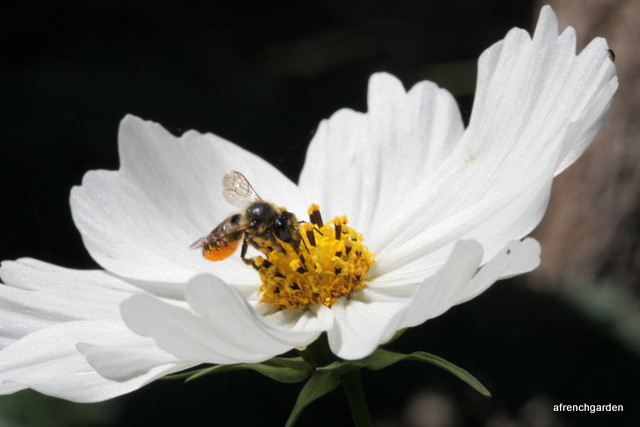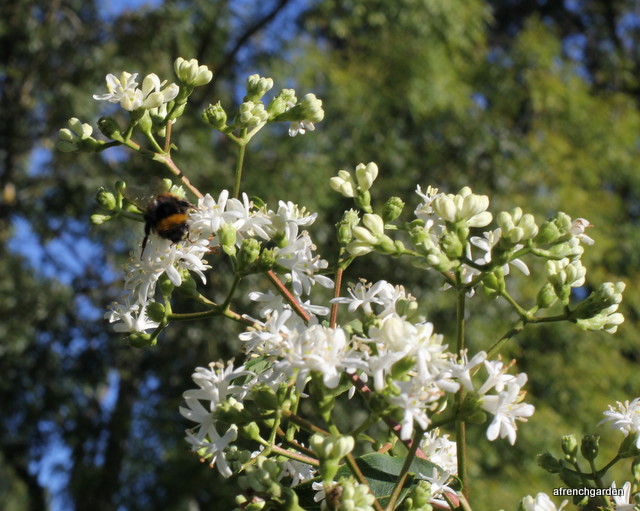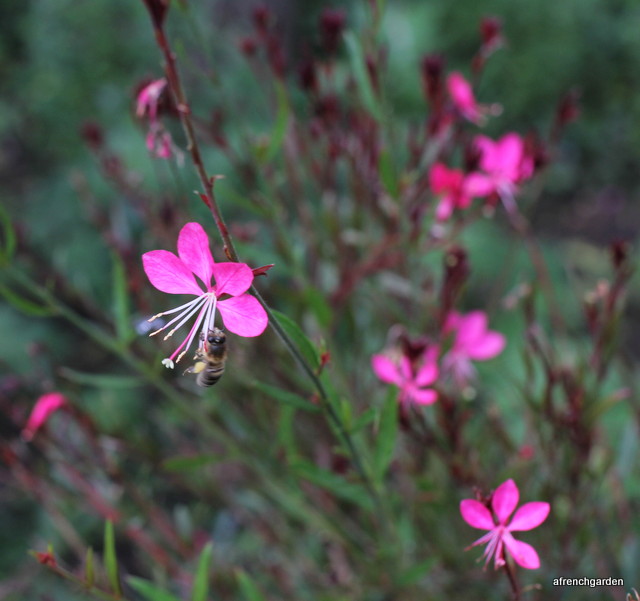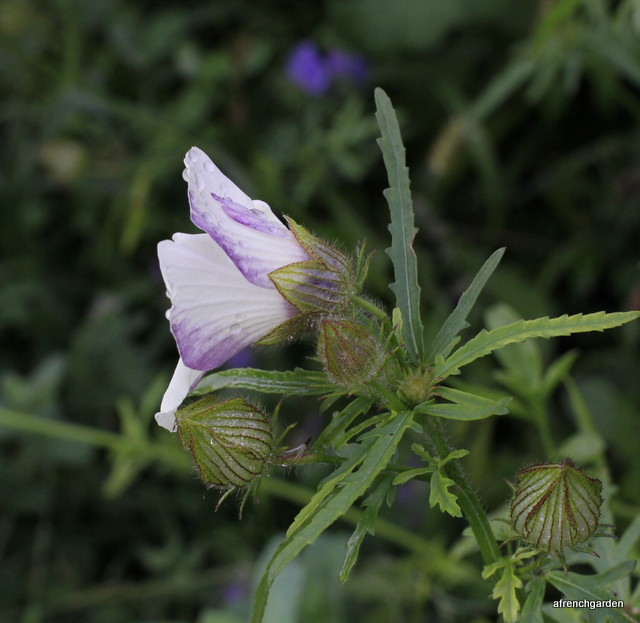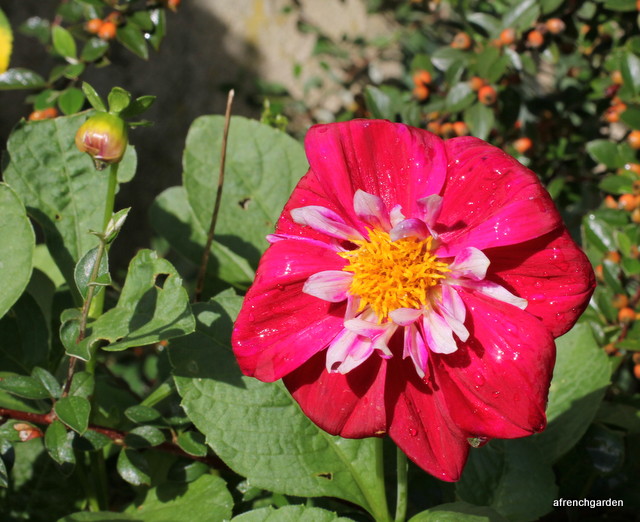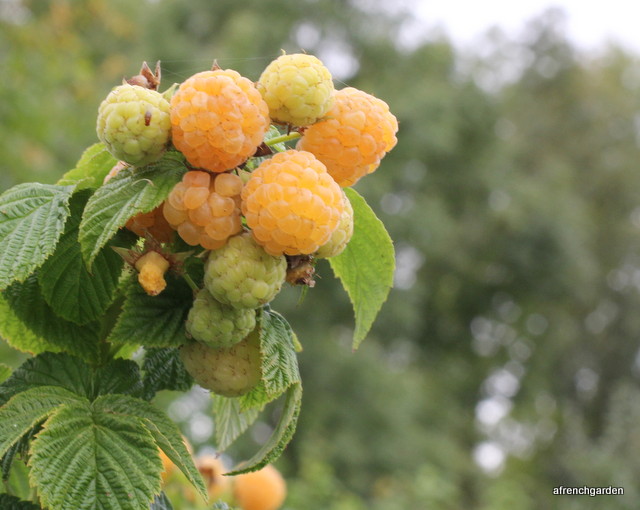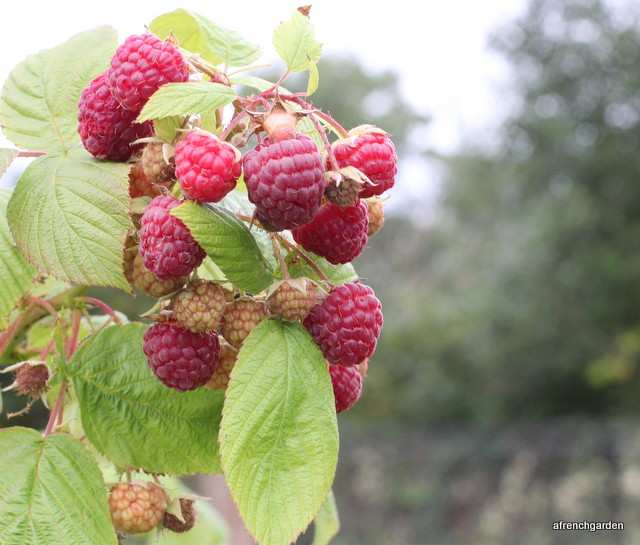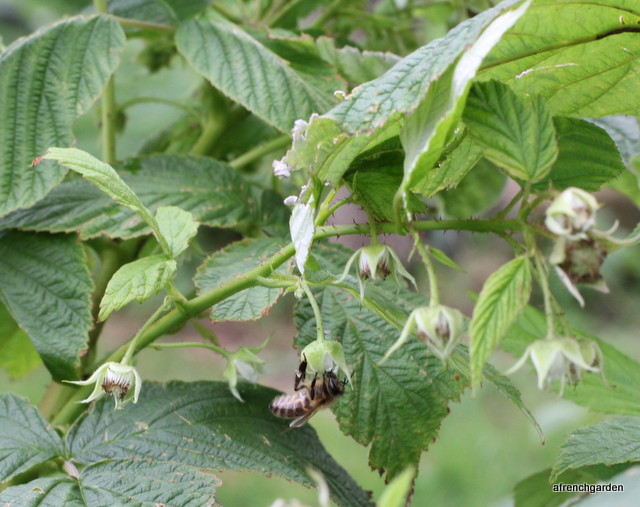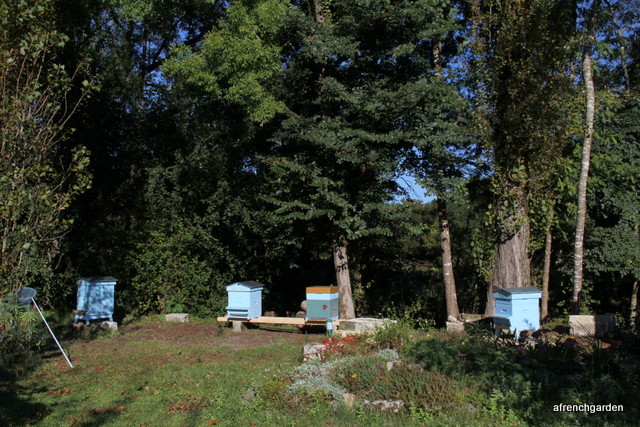
We have a part of the small vegetable garden that we try to keep for herbs. We have several friends who prefer tisanes to black tea so I grow mint, lemon balm. lemon verbena, camomile and dry them to make tisanes. I sometimes make them for myself, as I would like to wean myself off black tea, but it’s taking some time to change my preferences. We also grow any other bits and bobs and young plants that need keeping an eye on.
It tends to get a bit overgrown with the lavender encroaching and some seedling trees growing faster than expected and the Echium turning into amazing self-seeders. So, with our incredible spell of fine weather I decided to put some order into the plot and get lots cut back.
All went well until late in the afternoon, when it was sunny and warm, I noticed some Ivy bees flying around the border I was trying to straighten!
They looked as if they were trying to find their nests! I had a sinking feeling that I could have destroyed their nesting site.
I marked the edge with tiles and decided that all that could be done would be to cover the area with cardboard and leave it for a year in case the burrows were left intact.
I still surveyed the area daily and then I noticed two burrows.

The first was near tiles placed perpendicular to the edge, so at least all was not lost. The other was not far away but nearer the edge.
When I saw one enter the burrow, I waited patiently and photographed her as she made her exit.
I have been fascinated watching her enlarge the burrow. The proportions of earth that she is removing compared to her size is amazing. The slope of the hole is her total length long.
Now that I know that there are at least two active nests in that area, I will take the greatest of care and protect them until next year.
The female ivy bee is laying her eggs with a supply of pollen and nectar to nourish the future larvae and the adult bees will not emerge until this time next year.

I did see cuckoo bees on the same day I saw the first bees and I took this photograph.
I had already seen two different sorts of Epeolus bees on the asters. These bees are cuckoo bees and target Colletes bees like the Ivy bees (Colletes hederae). They will enter the Ivy bees’ nests and lay their eggs so that their larvae will survive rather than the Ivy bees.
Nature is tough but I will guard my nests of Ivy bees as best as I can.




























